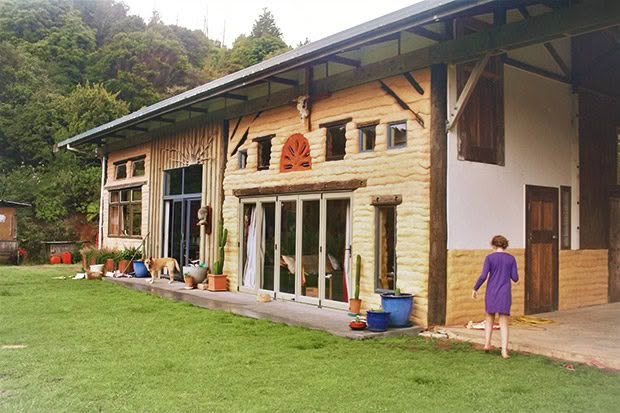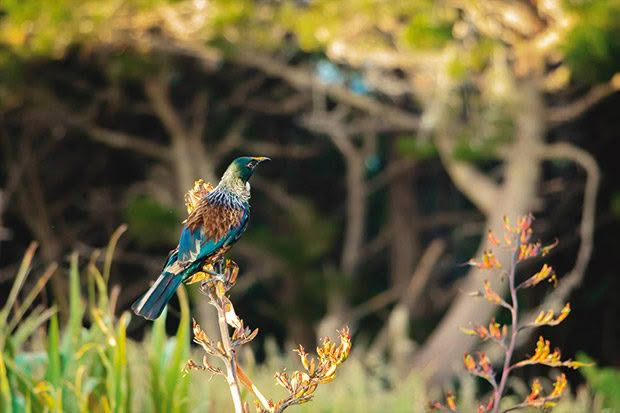Polly Greeks’ Blog: The forest calls for minimalism
Polly and co welcome — with love — a large slab of concrete to their off-grid idyll.
Words: Polly Greeks
This summer, visiting friends are in for a surprise. Like the time we gained hot running water, or the year our kitchen finally came indoors, James and I have taken another huge leap forward in our off-grid existence.
To be honest, I’m not expecting the large concrete pad adjacent to the house to earn more than a nod from urban visitors, who tend to take sealed surfaces for granted. James and I also know our idealistic guests, who haven’t yet gone off-grid but aspire to, might even be a bit contemptuous.
We laugh about that. Once, it was us. Fresh on the land, we too loftily derided concrete as a contrived and artificial barrier between ourselves and nature. However, I know our seasoned bush-dwelling friends (especially those living in house trucks, yurts and rustic homemade homes) will appreciate the concrete just as much as we do.
Our children view the 90 square metres of new house foundations as a smooth place to cycle and scooter, but I see a big and beautiful buffer between our kitchen, lounge and Far North forest mud.
I also see progress — this is where future bedrooms, a back porch, workshop and my studio will sit. James regards the concrete as something of a miracle. “Getting the ready-mix trucks onsite was tantamount to rolling cricket balls along a 300-metre, horizontal chopstick without them toppling off,” he explained to my dad.

The house so far.
The drivers, albeit white-knuckled and sweating profusely upon arrival, were jolly good sports. “Well, it’s not my truck,” one laughed somewhat maniacally when I congratulated him on making it through the streams and over the steep, narrow track.
That night, James and I agreed it’s cosmically affirmative when a huge company, with all its insurance padding, assumes the risk in our off-grid ventures.
The children are terribly excited to be getting rooms of their own. We all are. I’ve loved aspects of our co-sleeping arrangement — some of our best times laughing together as a family comes when we’re tucked up on cold winter nights. But Vita (now 9) and Zendo (6) take up a lot more area than they used to.
“Think of the space in here once it’s just us.” From his reverential tone, I get the feeling James foresees an immense prairie of wide-open floor. “You’re not to fill it,” he adds somewhat accusingly. I don’t do it on purpose, but I seem to attract stuff.
People give me things that look handy; a stackable seed-sprouter, a willow laundry basket, a box of children’s books from the 1980s, a large steel wok… Every now and then, James examines the accumulated debris in exasperation.
He will point out that we already have two willow laundry baskets, our mung beans sprout in jars, and the kids are too busy with their four dozen weekly library books to touch a pile of old Scholastic paperbacks. A deep cull always follows after which I sincerely agree minimalism is the way to go.

Beyond our windows, the forest always upholds the case for simplicity and visual silence. The uninhabited ranges, free from human clutter, expand my mind and soul whenever my eyes roam across them.
We don’t need extra things. What we need is time to stop, breathe deeply and savour all we have. Zendo, watching me smile at the view, suddenly asks, “Mama, what is love?”
Oh, where to begin? It’s all of this, I want to say, gesturing at the quiet valley baking in the heat, with the forest breathing around us. It’s every fruit tree your father’s planted, your small hand slipping into mine on a night escort to the outside toilet, the vegetable beds brimming with greenness and fat, humming bees.
It’s the candle-lit table full of laughing people at your grandmother’s 75th birthday; the mānuka oil rubbed on your split knee; the dog rolling over to give you his belly. It’s the feeling at 5am when the world is just waking and the rarefied air resounds in the dawn call of tūīs. It’s also a deep sense of gratitude for a new concrete pad.
Love this story? Subscribe now!
 This article first appeared in NZ Life & Leisure Magazine.
This article first appeared in NZ Life & Leisure Magazine.
